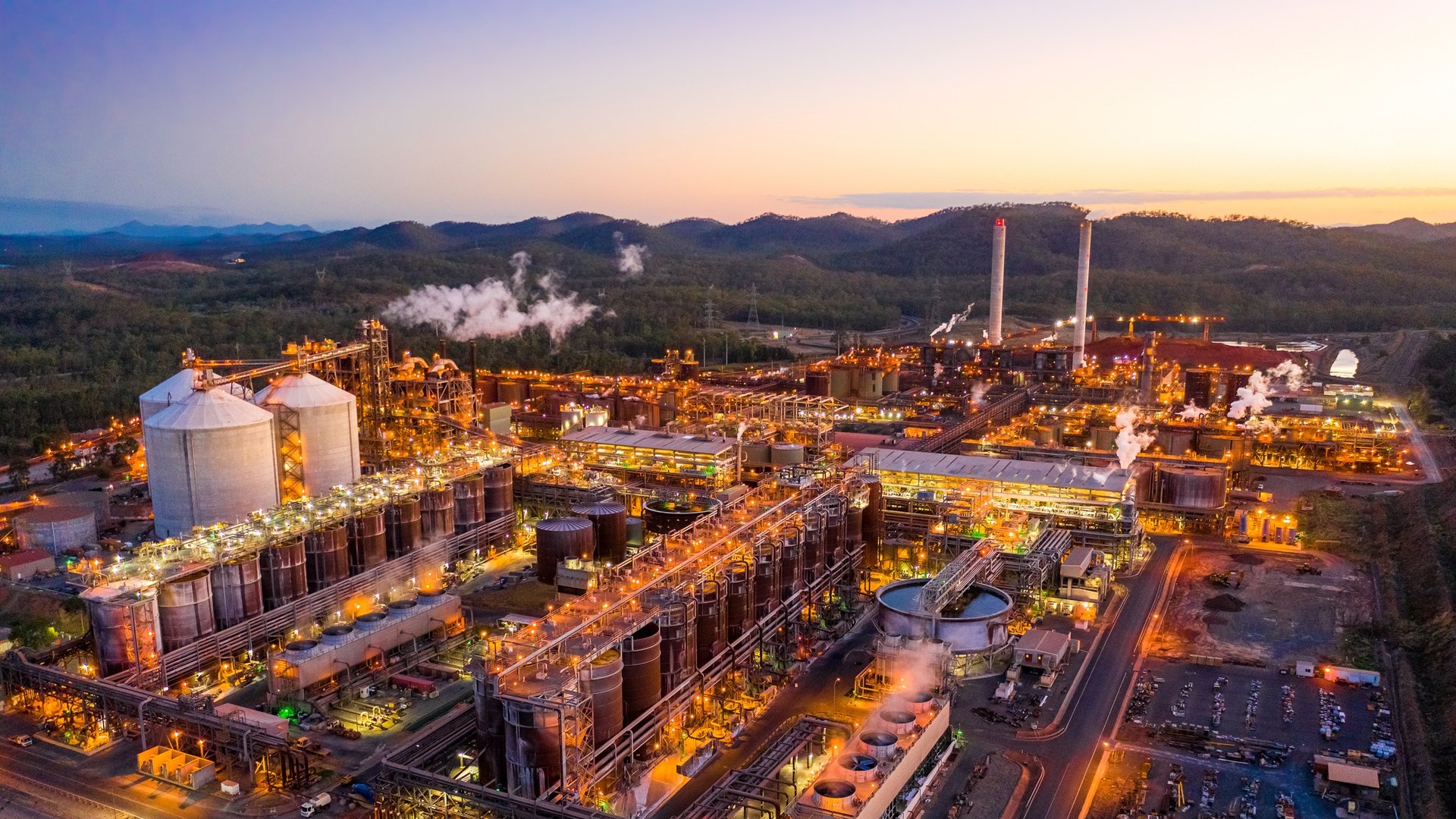 Rio Tinto announced that, working with Sumitomo Corp., it will build a first-of-a-kind hydrogen plant in Gladstone as part of a A$111.1 million ($76.5 million) program aimed at lowering carbon emissions from the alumina refining process. The Yarwun Hydrogen Calcination Pilot Demonstration Program received the green light after a A$32.1 million ($22.1 million) co-funding boost from the federal government’s Australian Renewable Energy Agency (ARENA).
Rio Tinto announced that, working with Sumitomo Corp., it will build a first-of-a-kind hydrogen plant in Gladstone as part of a A$111.1 million ($76.5 million) program aimed at lowering carbon emissions from the alumina refining process. The Yarwun Hydrogen Calcination Pilot Demonstration Program received the green light after a A$32.1 million ($22.1 million) co-funding boost from the federal government’s Australian Renewable Energy Agency (ARENA).
The program is aimed at demonstrating the viability of using hydrogen in the calcination process, where hydrated alumina is heated to temperatures of up to 1,000°C. It involves construction of a 2.5-MW on-site electrolyzer to supply hydrogen to the Yarwun refinery and a retrofit of one of Yarwun’s four calciners so it can operate at times with a hydrogen burner. If successful, the program could pave the way for the adoption of the technology at scale globally.
“This pilot plant is an important step in testing whether hydrogen can replace natural gas in Queensland alumina refineries,” Rio Tinto Aluminum Pacific Operations Managing Director Armando Torres said. “At Rio Tinto we have put the energy transition at the heart of our business strategy, and this is one of the ways we’re working towards decarbonizing our operations.”
The trial is expected to produce the equivalent of about 6,000 metric tons (mt) of alumina per year while reducing Yarwun’s carbon dioxide emissions by about 3,000 mt/y. Converting the entire plant to green hydrogen could reduce emissions by 500,000 mt/y, which is the equivalent of taking about 109,000 internal combustion engine cars off the road.
Construction will start in 2024. The hydrogen plant and calciner are expected to be in operation by 2025.
Sumitomo will own and operate the electrolyzer at Yarwun site and supply the hydrogen to Rio Tinto directly. The electrolyzer will have a production capacity of more than 250 mt/y.
“Demonstrating real-world applications of hydrogen in industrial settings with motivated partners is essential to reducing carbon emissions and working toward our company’s vision of achieving carbon neutrality by 2050,” Sumitomo Energy Innovation Initiative Director, Seiji Kitajima said. “Through this demonstration, Sumitomo aims to venture into the commercialization project to contribute to Rio Tinto’s decarbonization.”
The pilot plant follows the success of a A$1.2 million feasibility study co-funded by Rio Tinto and ARENA that was announced in 2021.






